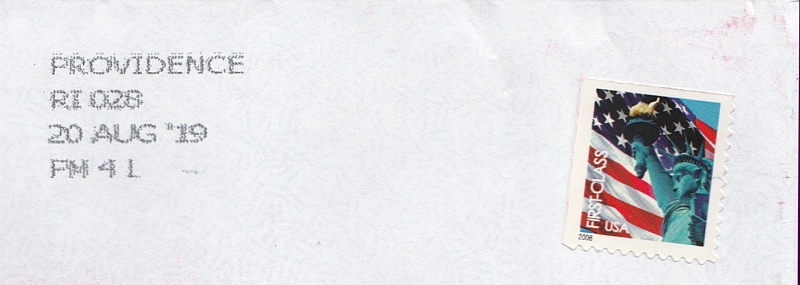Post by stanley64 on May 26, 2020 7:55:23 GMT

Given all of the Type 2 spray cancels I have seen (similar to the one shared by tomiseksj above), each of them omits the 6-wavy line cancellation and I am inclined to belief that it is a 2-step process; the location and wavy-lines are applied separately. I am currently working on a single-page exhibition for the 'USA Spray-On Postmarks' and perhaps can share a more definitive answer in the coming days.
For now though, love them or loathe them, the United States Postal Service (USPS) along with other Postal Authorities have been using spray-on postmark canceling equipment for almost a decade. During this time, at least with the USPS, two different series of machines have been used to apply the cancel as part of the process of sorting and routing mail. As a result, there is a wealth of material out there for study if the website of the The International Machine Cancel Society is any indication.
On the topic of ink-jet cancels and in this Birmingham example, the length of the postmark’s text for machine 6T is 49mm and was applied by the original AFCS-100. The bottom cancel uses the newer AFCS-200 equipment and has the postmark’s text shortened to 44mm.


Above:
BIRMINGHAM AL 350 / 17 JAN 2012 PM 6 T (Trail) - applied by older AFCS-100
BIRMINGHAM AL 350 / 31 DEC 2011 PM 1 L (Lead) - applied by newer AFCS-200
BIRMINGHAM AL 350 / 17 JAN 2012 PM 6 T (Trail) - applied by older AFCS-100
BIRMINGHAM AL 350 / 31 DEC 2011 PM 1 L (Lead) - applied by newer AFCS-200
It is interesting to note that the newer equipment was put into use in 2011(?) and the Birmingham facilities would continue using the older AFCS-100 equipment along side the newer AFCS-200 equipment for some time.
To see some of the modern postal equipment in operation, here is a short video - Siemens AFCS 200
Happy collecting!
